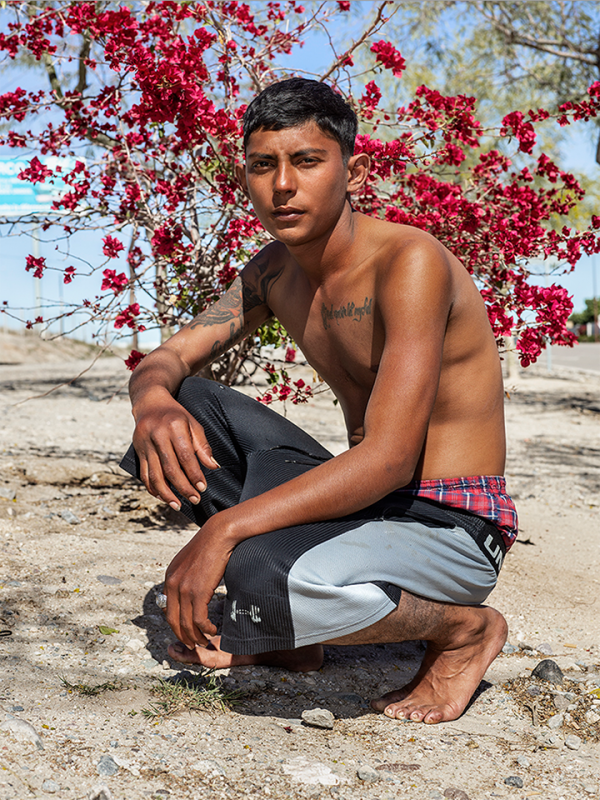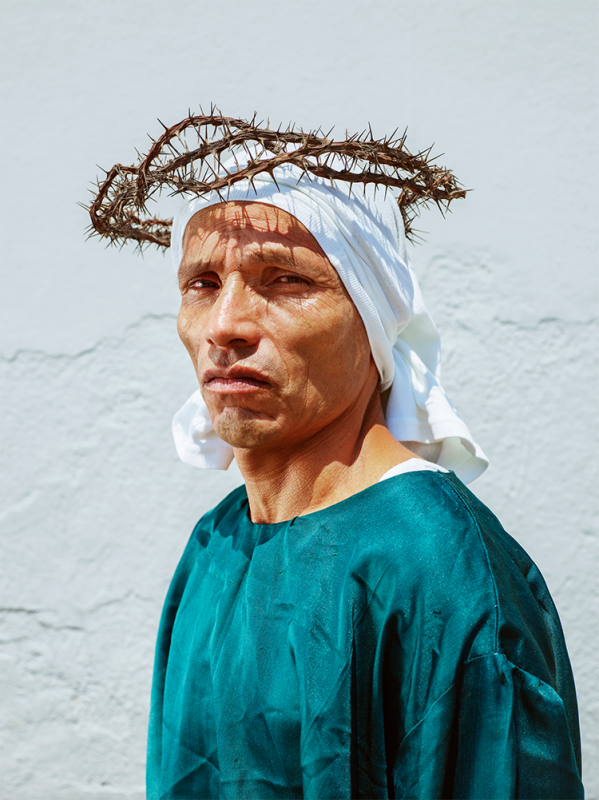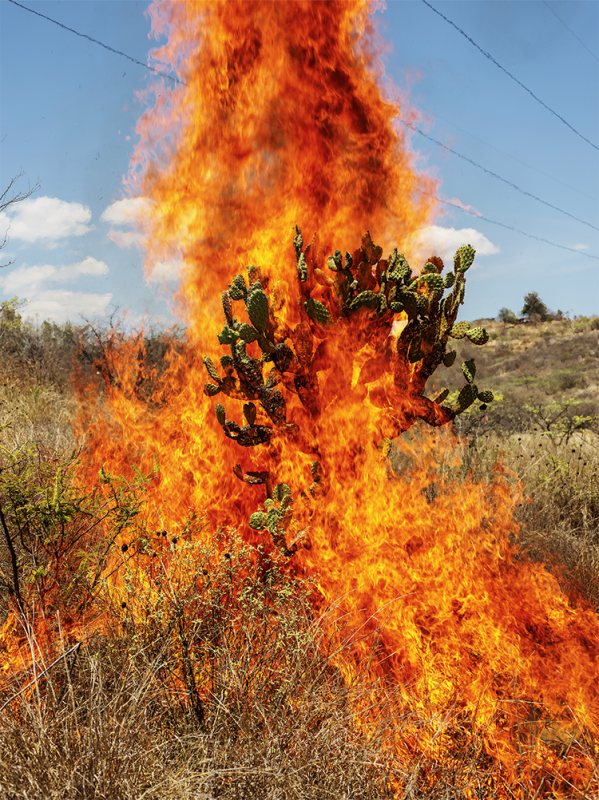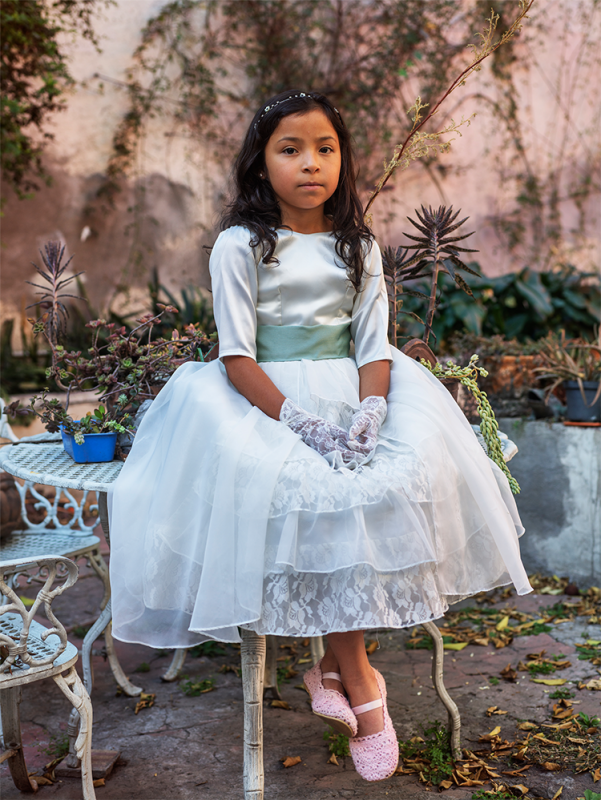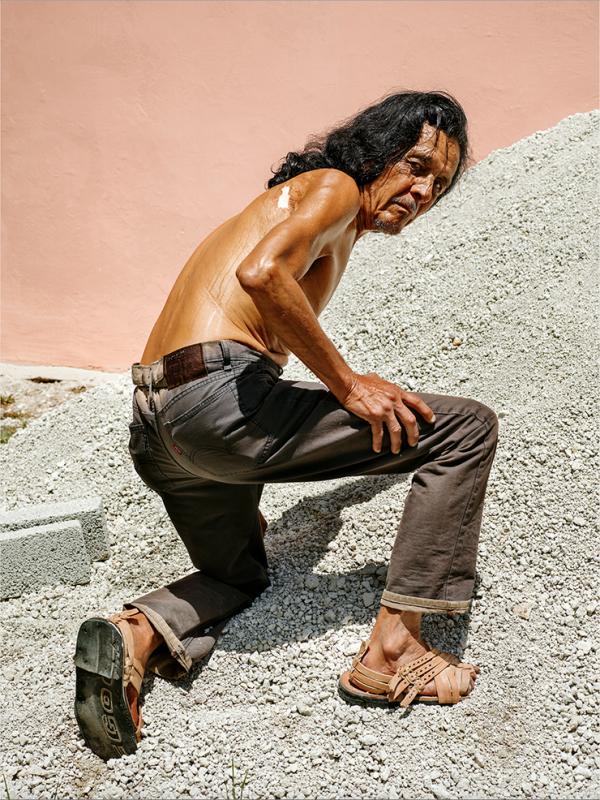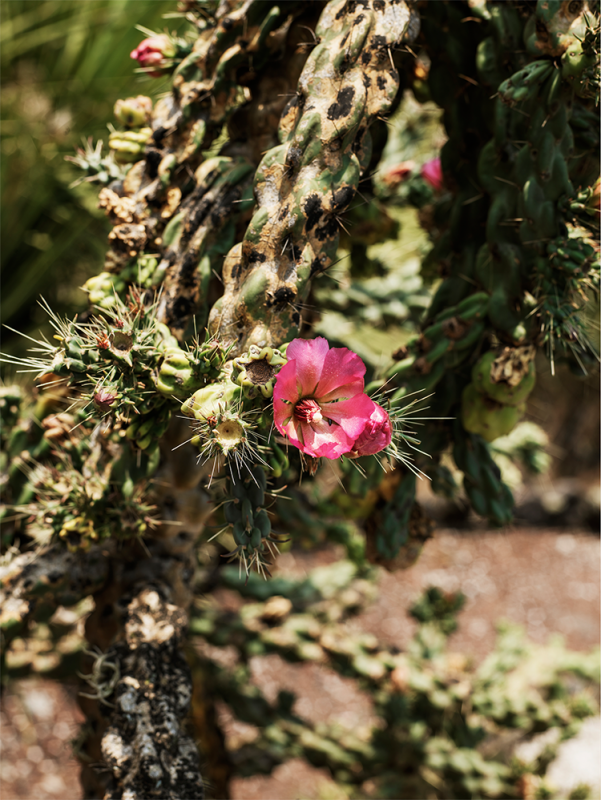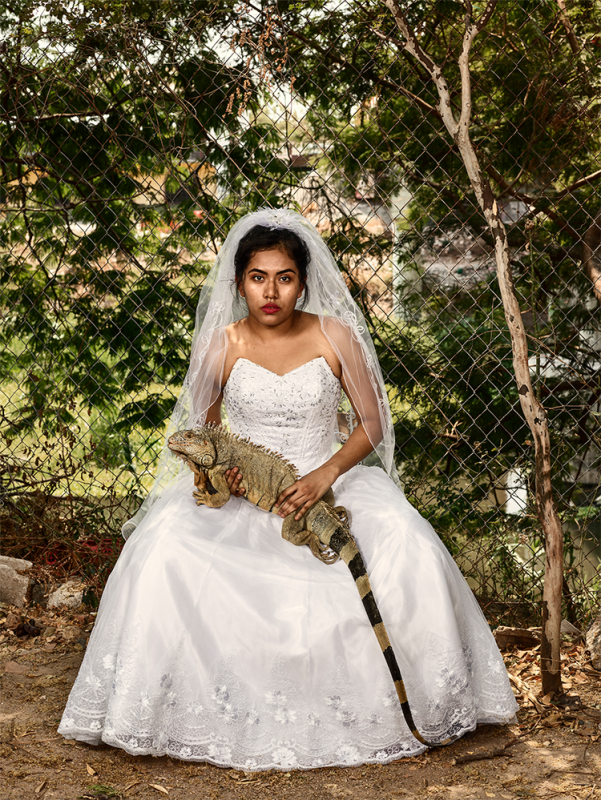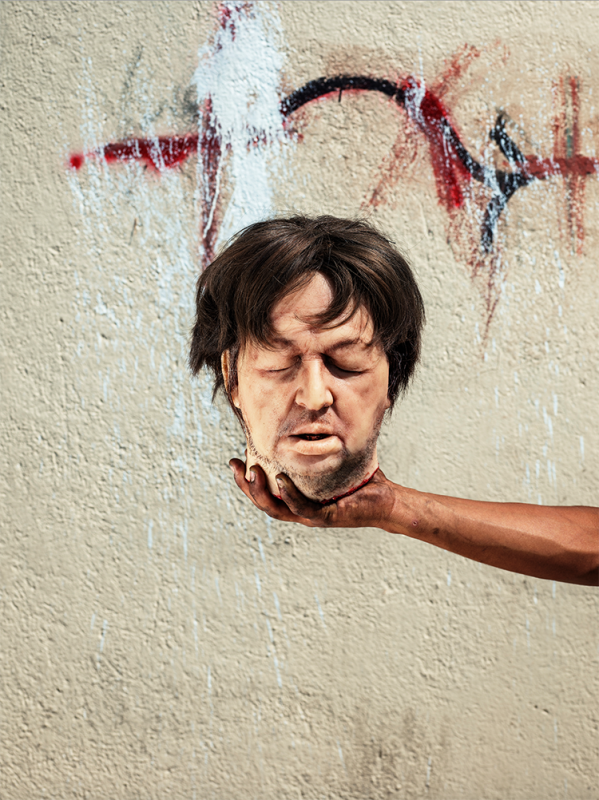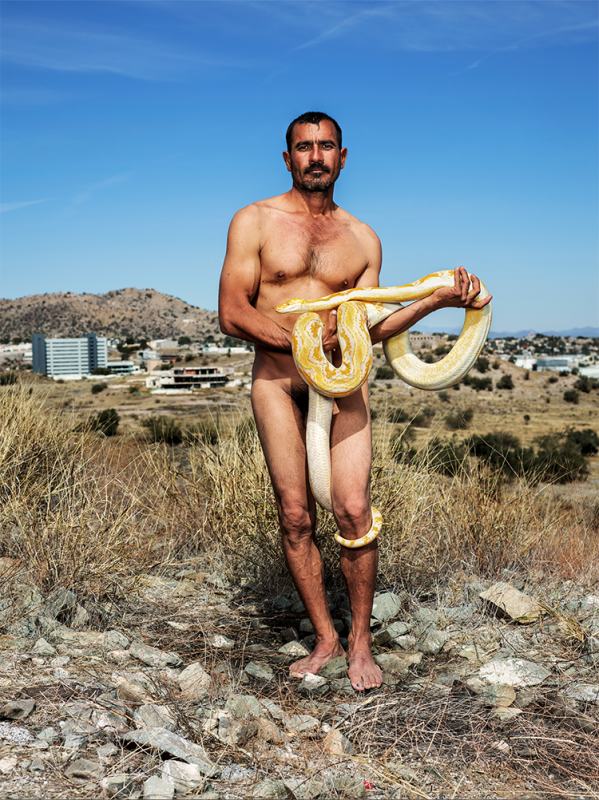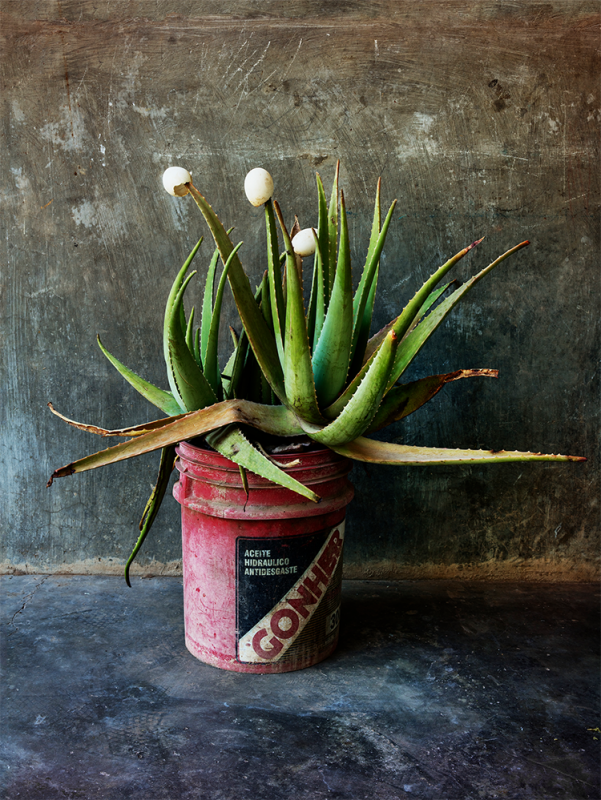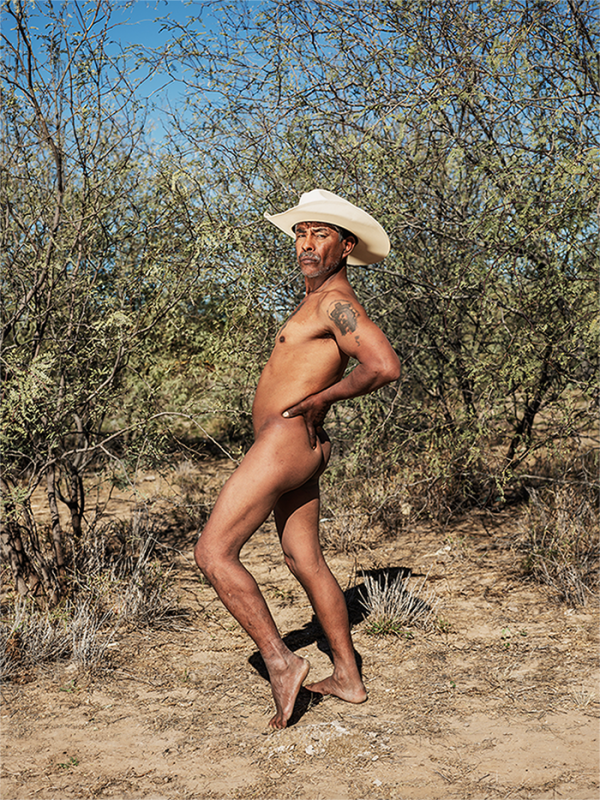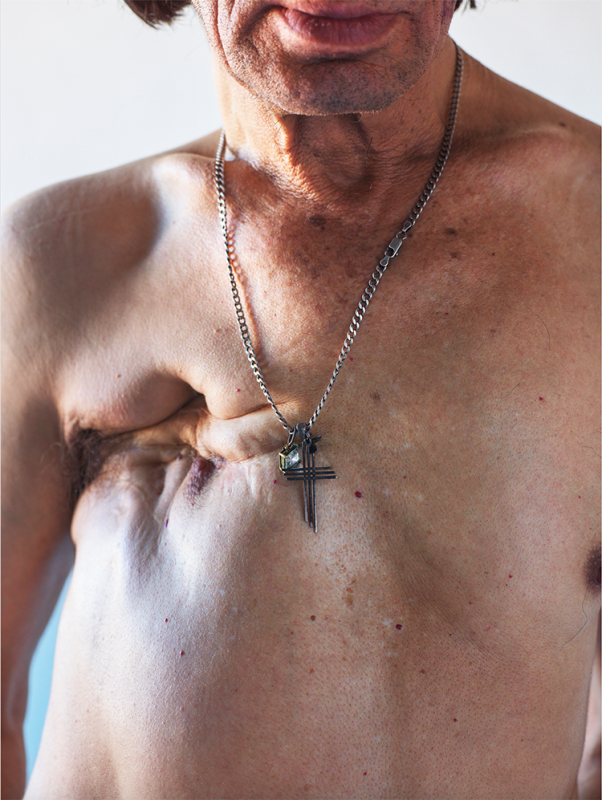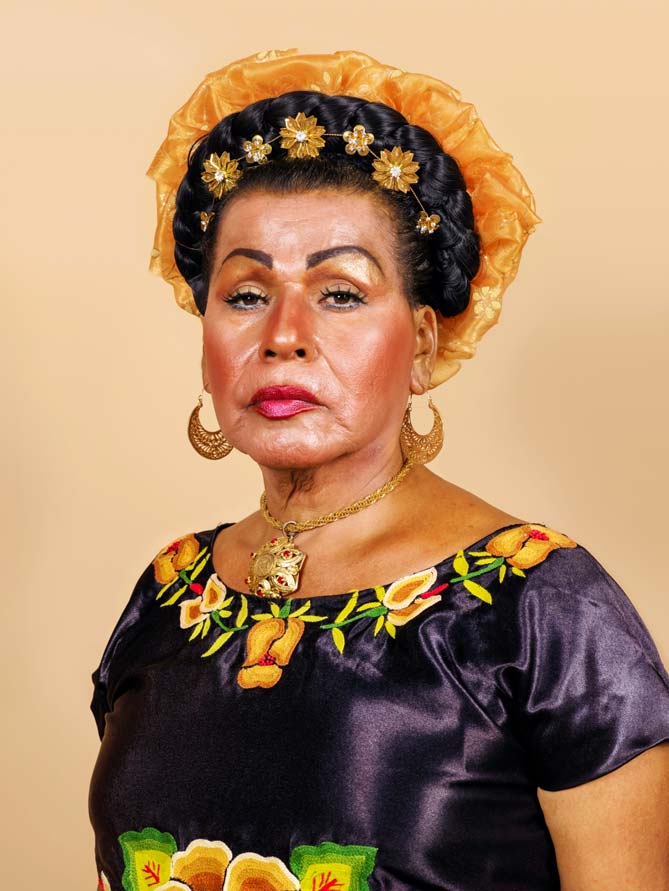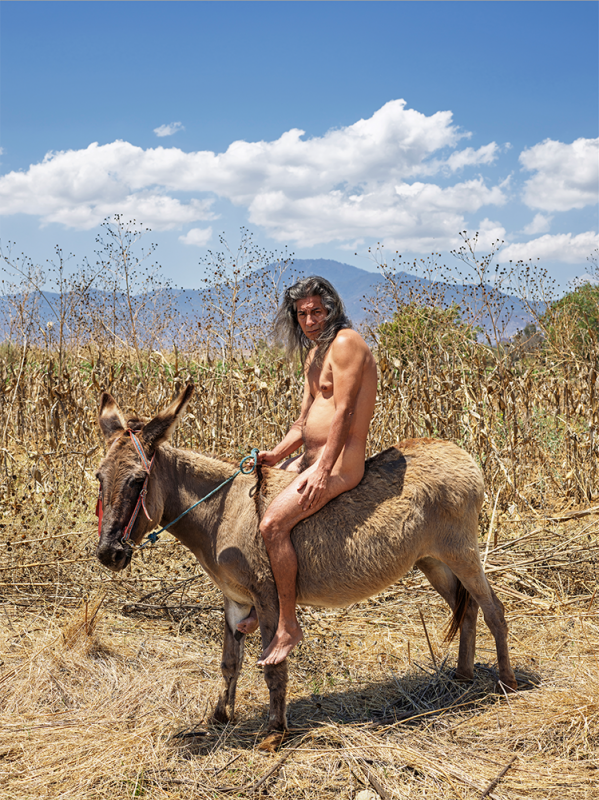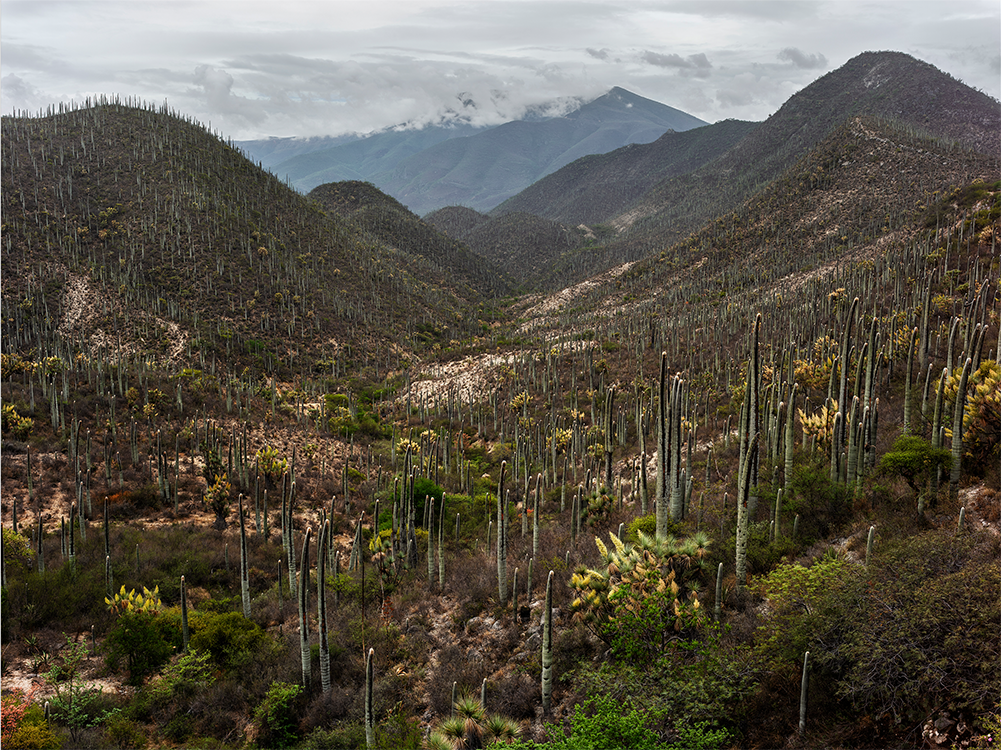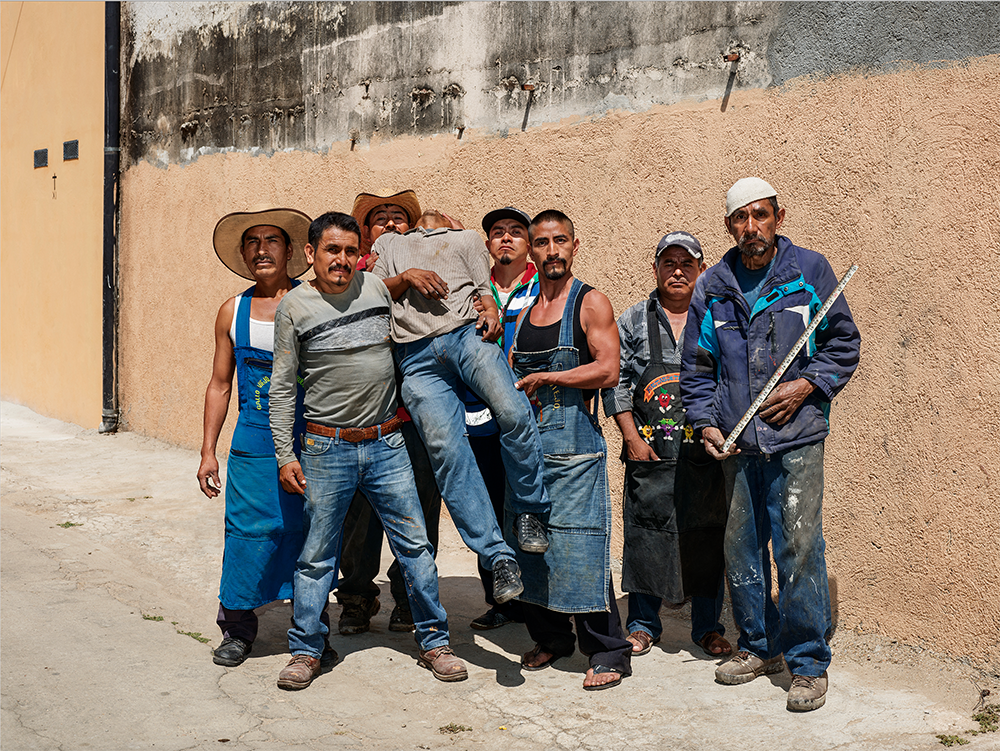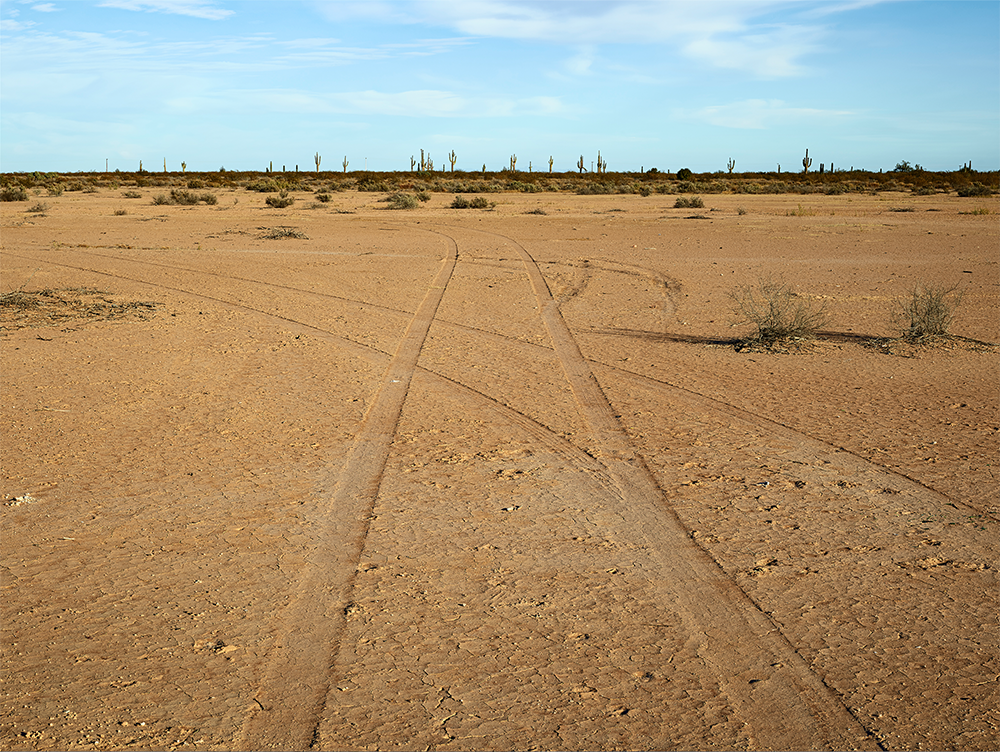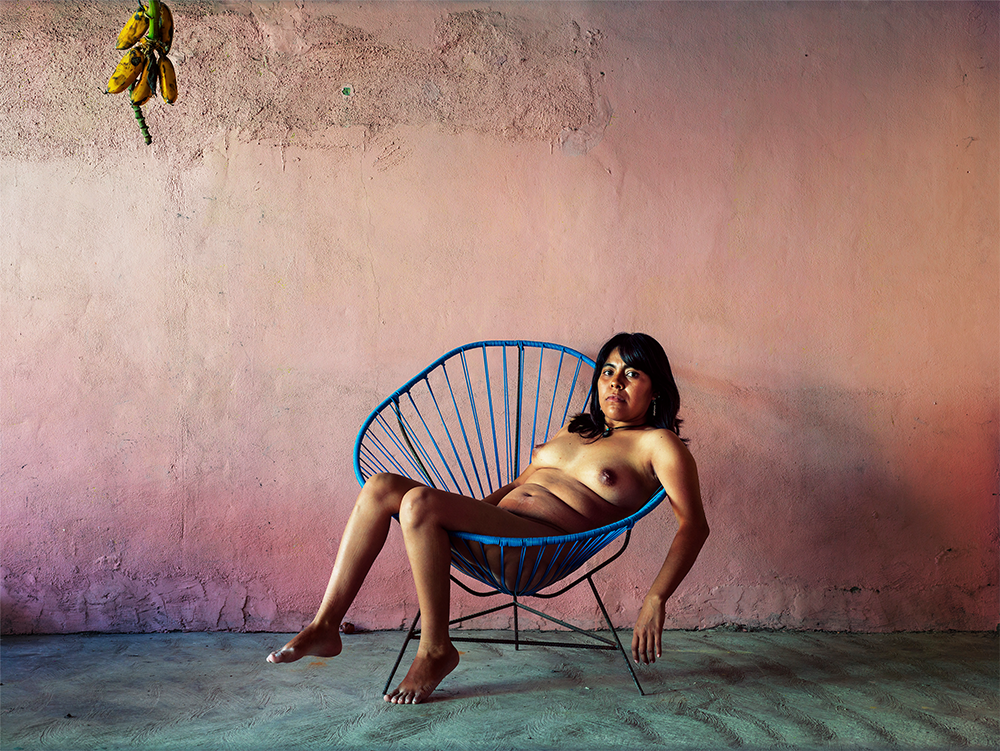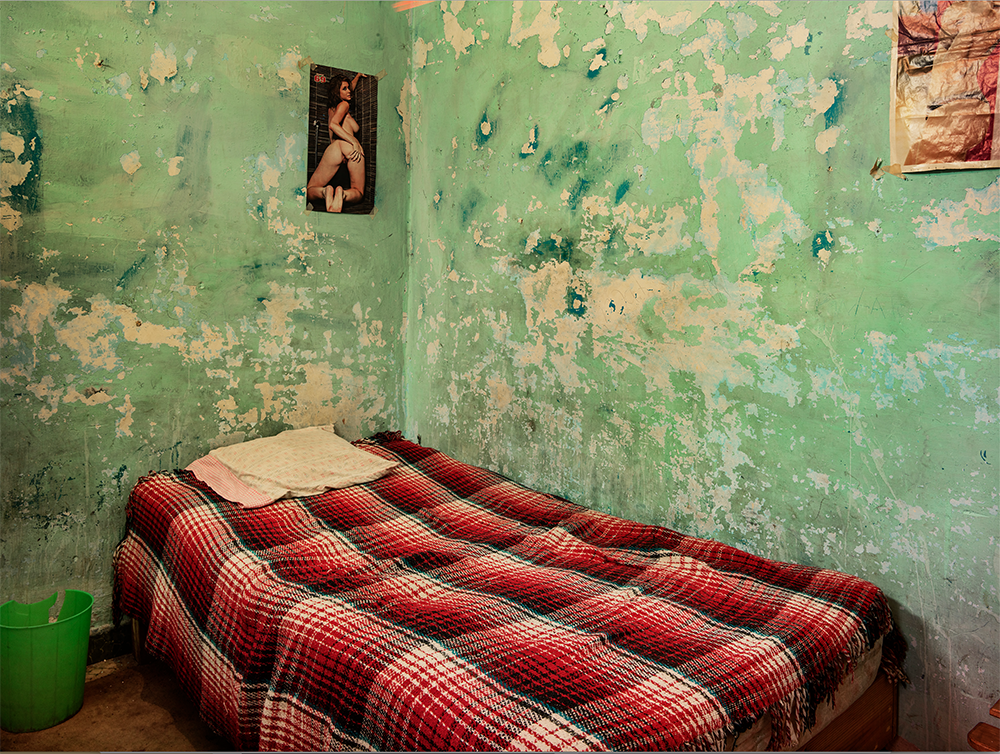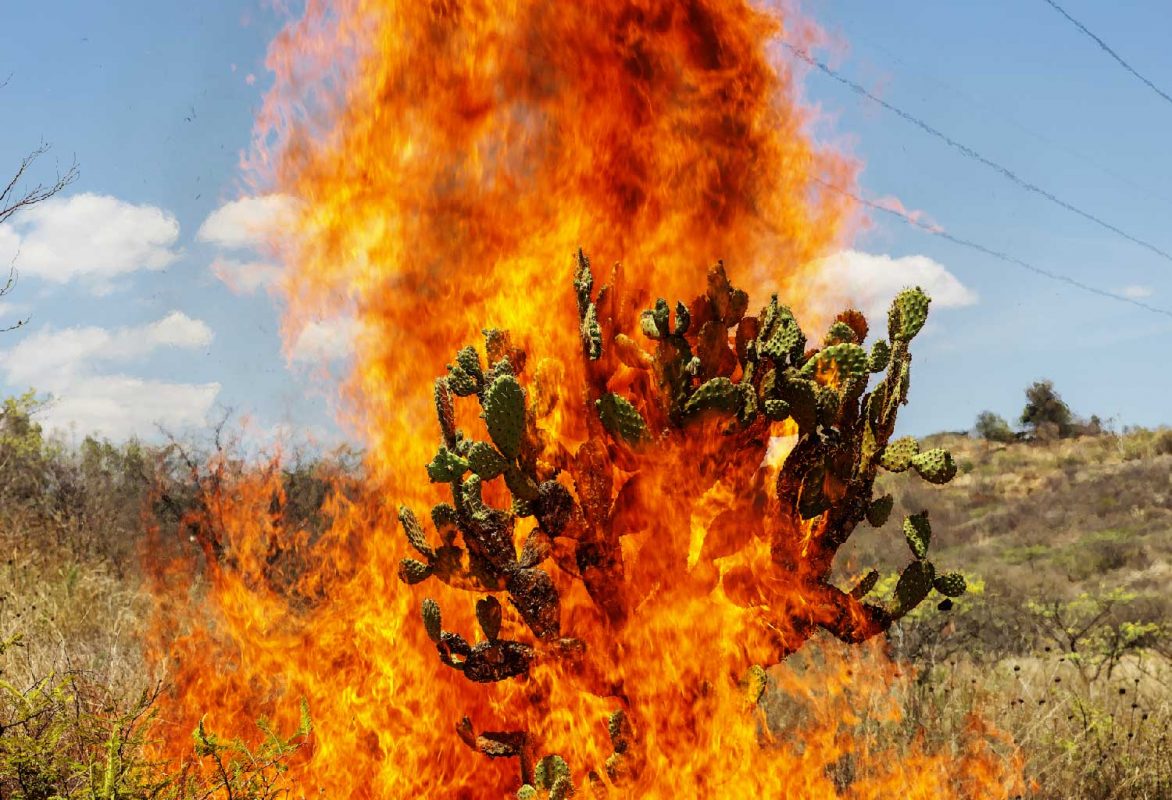
La Cucaracha
Works
F i v e L e g g e d C o c k r o a c h
Five Legged Cockroach
Ashraf Jamal
The title of Pieter Hugo’s 2019 series – two years in the making – comes from a legendary Mexican song. Delirious, intense, immediate, the song – La Cucaracha – is both joyous and tragic, for while the mood is uplifting its theme – the broken gait of a cockroach reduced to five legs – reminds us that every aspiration harbours its dark and agonistic side.
Federico García Lorca has the best descriptor for the mood and spirit of La Cucaracha – duende. A term widely used in Spanish, Portuguese, and Filipino folklore, duende refers to the ‘ghost’ or ‘goblin’ which inhabits a song. As Lorca phrases it, ‘the duende … is a power, not a work. It is a struggle not a thought. I have heard an old maestro of the guitar say, “the duende is not in the throat, the duende climbs up inside you, from the soles of the feet”.’
To understand Pieter Hugo, one needs to forego the commonplace view that he is a voyeur – someone who, from a position of immunity and impunity, objectifies the lives of others. The persistence of this view is troubling, because it mistakenly and predictively supposes that the artist records the world from a position of power – white male power to boot. This view is not only naïve, it is stunting, for it forces one to appraise a Hugo photograph as a thing, an object seen and framed from a prejudicial perspective.
However, if this were the case, what are we to make of the ‘spirit’ that courses through the work? What of the ‘power’, the ‘struggle’, that traverses the bodies seen, staged, and recorded? What of the electrified force field that shivers through the bodies, climbing up from the sole of a wounded foot? What, in other words, of the lives of others?
If Hugo’s photographs are a form of ethnography – and not anthropology – it is because they are a mode of writing the world – a scripture. This is because Hugo’s photographs – be they of Algerian men in a fashion shoot on the streets of Marseilles, or actors involved in the occult underbelly of Nollywood, or a grouping of people who, while distinct, belong to a particular caste or ‘kin’ – possess one persistent quality: they speak not to a type but to the complexity of being which courses through a given type. This is because Hugo’s photographs are unerringly and unwaveringly human. While most photographs record the type – the projected moral idea which gives a being its meaning – Hugo, unmoved by such a presumption, digs deeper to release the ghost of the troubled souls he encounters. His greatest gift is this Lorca-like ability to find the energy that cuts through the shell of the body.
The earliest interpretation of the power of photography was preoccupied with finding this spirit inside the stillness of a staged subject. Mysticism and neuroses were both fearful of the body’s soul being stolen in the instant that a photograph was taken. Today, in our image-saturated era, this concern has fallen by the wayside. But photographers like Hugo, who are a rare breed, persist in the belief that images possess an aura – that they carry the soul across a strait, rather than merely abducting or suppressing it.
It is this power – intrinsic to duende – that Hugo bodies forth every time he digs in and digs down to understand what it is he is seeing, and what can be seen. His camera is not a machine for surveillance. Rather, it is an alchemical tool which searches always for life’s trigger. And, in this case – the case of La Cucaracha – it is the Mexican body in all its contrary iterations and expressions that he has now bodied forth, a body bio-politically compromised, a body broken, ungainly, in pursuit of dignity despite the ignominy directed towards it from a bigoted and racist Western perspective.
It is no accident that it is the cockroach to which Hugo has turned, a creature one loathes as much as one envies, the scavenger and pest that is also the great survivor of any man-made or natural disaster. A creature perceived as an outsider, as alien, the cockroach is also humankind’s greatest reckoning. As the folkloric anthem goes: ‘The cockroach, the cockroach / can no longer walk / because she doesn’t have / because she lacks / the two hind legs to walk’. Disability, or invalidity, is the key to the song’s meaning. And yet, despite this compromise, the creature thrives on the hither side of its negation.
This, I believe, is the source code or wisdom that informs Hugo’s suite of photographs. What interests him – and persistently so – is how a being, while hocked or hobbled, manages to thrive and grow in strength. Out of lack comes power, out of abnegation comes strength. And if we, the viewers, fail to see this, then the fault is ours, for it is never enough to imagine one’s strength at the expense of others. It is never enough to suppose the abject object as a foil for one’s imagined composure and power. Rather, what should occur – what occurs in me when looking at a Hugo photograph – is an empathic understanding. It is not only the photographer’s optic that I see – though Hugo is omnipresent – but the person or persons who occupy the frame.
For some there is a formula in the way Hugo frames and lights a photograph. The resolution is acutely sharp, molecular in its detail. This might suggest that it is the two-dimensionality of the image – its sheer face – that matters to the artist, a taste which his detractors have criticised precisely because it appears to narrow the focus and reduce psychological complexity. I however disagree. For within the stark austerity of these works something else is also at play – the tremor in the figures – be it in the embrace of naked lovers within and against a jagged quarry, the man’s feet ashen, as though leeched of life; or the insouciance of the advocate at home, an odalisque reclining naked across a divan, clothed only in a pair of white socks.
How one interprets and feels these photographs reveals what one chooses to believe. Let me be clear: there is no straight answer. Rather, a nagging question prevails – a split apprehension – concerning whether Hugo’s photographs are truly empathetic works or whether, as a friend and photographer remarked, they ‘look like empathy’. This misgiving or doubt is not one I share, but one I have persistently encountered. It raises the question as to the honesty of Hugo’s photographs. For me they undoubtedly are, but the honesty he communicates is forked: it resides in the beings he presents to us, and, in a curiously perverted way, in the distance the artist sets up to achieve an impassive and unflinching gaze. Before a Hugo photograph we are at a crux – which, tellingly, is also the descriptor for the toughest section in an ascent in rock-climbing and mountaineering.
As I understand it, Hugo is never exercised by his own subjectivity or morality. He is unconcerned with telling us what he thinks and feels. Rather his empathy, stemming from a calculated distance, asks us to suspend opinion and recognise a ‘power’ – the power of photography as a recording tool and the power within the human – which is greater than the ‘work’ itself. For as Lorca reminds us, great art ‘is a struggle, not a thought’.
The corrective moral lens which detractors apply to Hugo’s photographs stems from a mistaken and misguided assumption that Hugo is unaware that photography, as a mechanism and machine, can never arrive at the truth of the moment recorded. Hugo understands this obstacle all too well. But what makes his work unique is that in knowing this he does not then try to trick us into believing in some residual truth. Rather, by unmasking the impossibility that we can arrive at some sentient truth, he then, cannily, allows for the possibility of this impossibility. Therein lies the paradox, the crux, and, in my view, the genius of this photographer.
Hugo does not lie, or pretend, or presume. Within the falsity that is photography he is able to body forth the human, not as a type, or caste, raced or sexualised identity, but as a creature traversed by these descriptors yet never reducible to them. Therein lies the intelligence of Hugo’s optic, therein the humanity in images of men and women hobbled by life, but triumphal all the same.
The broken cockroach with its five-legged gait is each and every person photographed, and each and every one of us who gazes at them. Broken cockroaches all, stripped of illusion, we peer balefully at each other from across a void.
– Ashraf Jamal is a Cape Town-based academic, writer and cultural theorist.

La Cucaracha
Huxley-Parlour gallery are pleased to present La Cucaracha, new photographs by South African artist Pieter Hugo. The series explores death, sexuality and spirituality in Mexico.
This latest body of work is the result of four trips to Mexico by Hugo over a period of two years. During these trips Hugo travelled to the industrialised zone of Mexico City, the desert of Hermosillo and the mountainous regions of Ixtepec and San Crisobel, The resulting photographs – a mix of individual portraits, vibrant and visceral landscapes, interior studies and still lifes – present a multifaceted study of place.
‘Mexico has a particular ethos and aesthetic; there is an acceptance that life has no glorious victory, no happy ending. Humour, ritual, and a strong sense of community and an embrace of the inevitable make it possible to live with tragic and often unacceptable situations.
There is a very different relationship with death here to what I am used to. If one looks beyond the clichés of dancing skeletons and sugar skulls, there’s a deeply complicated connection with mortality. This necropolitical dynamic is most visible in contradictory expressions of honouring the afterlife, in the Day of the Dead celebrations and the brutal dismemberment of bodies by narco traffickers.
Alongside the flamboyance and high-pitched register of this series, there is the ordinariness of the everyday. I am drawn to the fabulousness of the banal and the banality of the exotic.’
For this series, Hugo has drawn on Mexican history, as well as cultural, art historical and literary references, such as the mural From the Dictatorship of Porfirio Diaz to the Revolution (1957-66) by Communist artist David Alfaro Siqueiros. While referencing Mexico’s rich visual culture, Hugo’s work attempts to investigate how ritual, tradition and community inspire the complex reconciliation between the extremes of life and death.
The series reflects the artist’s long-standing interest in how history and environment can shape a culture and those living within it. Hugo looks both to rituals of rites of passage, and their associated formal codes of conduct and dress, and also the wider rituals of religion, theatre and community. In this series, he specifically looks to the impact on the physical body, creating powerful portraits that focus on tattoos, jewellery, of sweat on skin and scars.
The title of the body of work, La Cucaracha, comes from the Spanish folk song, popular in Mexico, whose original meaning remains unknown. The upbeat song tells the story of a cockroach who struggles to walk with two back legs missing. The titular character can symbolise resilience in the face of hardship, becoming a metaphor for the extremes of Mexican life, where joy and tragedy coexist in the fabric of everyday existence.
Pieter Hugo (born 1976) has had solo exhibition at numerous international museums, including the Rijksmuseum, Amsterdam, Foundation Henri Cartier-Bresson, Paris, and Hague Museum of Photography, The Netherlands. His work is held in collections including The Metropolitan Museum of Art, and the MoMA, New York; J. Paul Getty Museum, Los Angeles; San Francisco Museum of Modern Art; Centre Pompidou, Paris; V&A Museum, London; and The South African National Gallery, Cape Town, amongst others.


